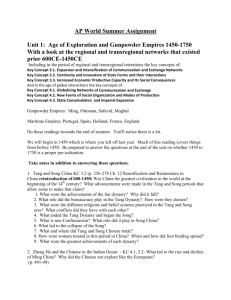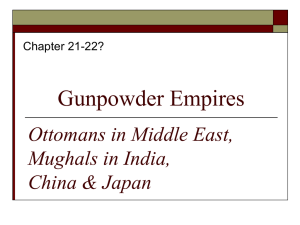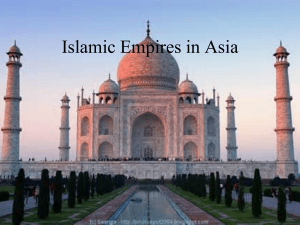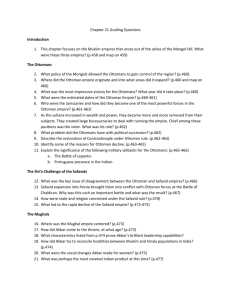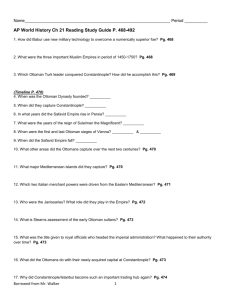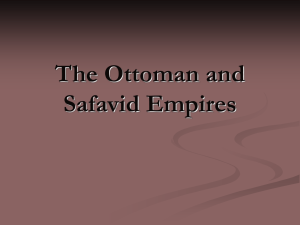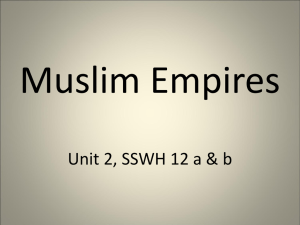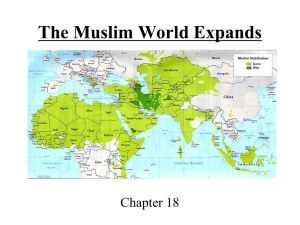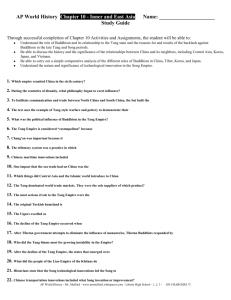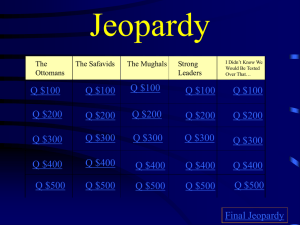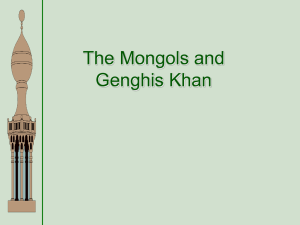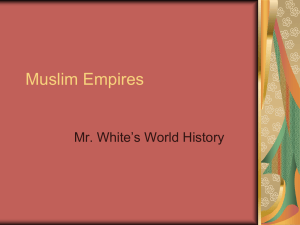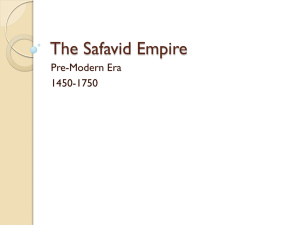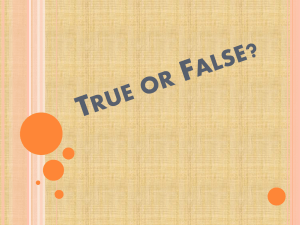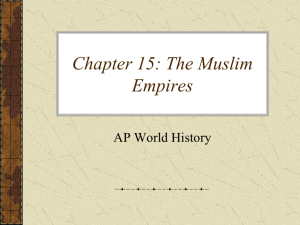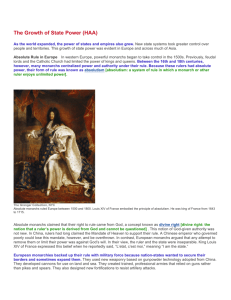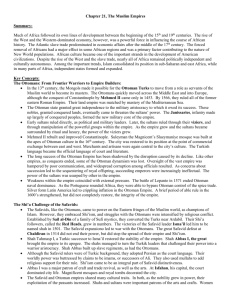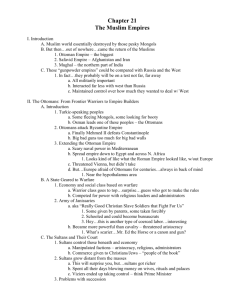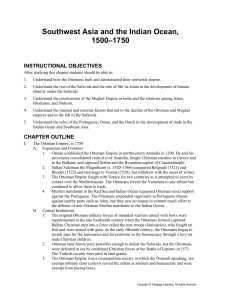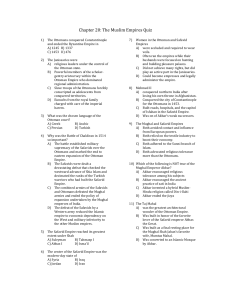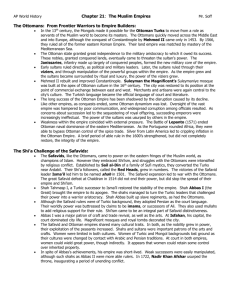AP World Summer Assignment Unit 1: Age of Exploration
advertisement
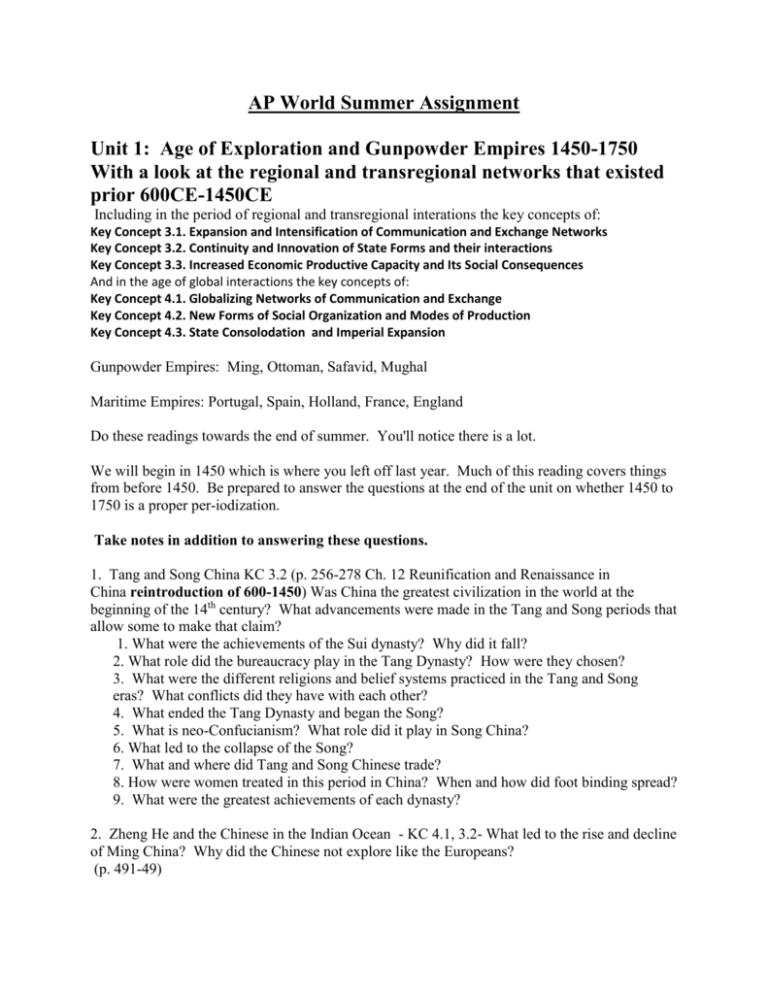
AP World Summer Assignment Unit 1: Age of Exploration and Gunpowder Empires 1450-1750 With a look at the regional and transregional networks that existed prior 600CE-1450CE Including in the period of regional and transregional interations the key concepts of: Key Concept 3.1. Expansion and Intensification of Communication and Exchange Networks Key Concept 3.2. Continuity and Innovation of State Forms and their interactions Key Concept 3.3. Increased Economic Productive Capacity and Its Social Consequences And in the age of global interactions the key concepts of: Key Concept 4.1. Globalizing Networks of Communication and Exchange Key Concept 4.2. New Forms of Social Organization and Modes of Production Key Concept 4.3. State Consolodation and Imperial Expansion Gunpowder Empires: Ming, Ottoman, Safavid, Mughal Maritime Empires: Portugal, Spain, Holland, France, England Do these readings towards the end of summer. You'll notice there is a lot. We will begin in 1450 which is where you left off last year. Much of this reading covers things from before 1450. Be prepared to answer the questions at the end of the unit on whether 1450 to 1750 is a proper per-iodization. Take notes in addition to answering these questions. 1. Tang and Song China KC 3.2 (p. 256-278 Ch. 12 Reunification and Renaissance in China reintroduction of 600-1450) Was China the greatest civilization in the world at the beginning of the 14th century? What advancements were made in the Tang and Song periods that allow some to make that claim? 1. What were the achievements of the Sui dynasty? Why did it fall? 2. What role did the bureaucracy play in the Tang Dynasty? How were they chosen? 3. What were the different religions and belief systems practiced in the Tang and Song eras? What conflicts did they have with each other? 4. What ended the Tang Dynasty and began the Song? 5. What is neo-Confucianism? What role did it play in Song China? 6. What led to the collapse of the Song? 7. What and where did Tang and Song Chinese trade? 8. How were women treated in this period in China? When and how did foot binding spread? 9. What were the greatest achievements of each dynasty? 2. Zheng He and the Chinese in the Indian Ocean - KC 4.1, 3.2- What led to the rise and decline of Ming China? Why did the Chinese not explore like the Europeans? (p. 491-49) 1. Who was Hongwu? What legacy did he leave in China? 2. What role did the Confucian scholars play in Ming China? How was that different than before? 3. What were the achievements of Zheng He? 4. Why did the Chinese stop exploration? 5. What was the European relationship with Ming China? 3. The Byzantine Empire KC 3.2 (p. 194-210 Ch. 9 Civilization in Eastern Europe reintroduction of 600-1450) What survived from the Eastern Roman Empire into the early modern period? What were the weaknesses of it that allowed the Ottomans to overrun it? 1. What was the significance of Vladimir I to Russian religion? What decision did he make and why? 2. What were the distinctive traits of the Byzantine Empire? 3. Who was Justinian? What were his accomplishments? 4. What is the current meaning of Byzantine? Where did that come from? 5. What was distinctive about Eastern Orthodox Christianity? 6. What effect did Byzantium have on Russia? 7. What led to the rise and decline of Kievan Rus? 4. The rise of Gunpowder Empires KC 4.3 - What were the changes between the Byzantine and Ottoman Empire? How did the Ottomans manage a diverse empire? (p. 456-466 on this topic) 1. What effect did Babur have on India? What were his plans there? 2. What did the Ottomans, Mughals, and Safavids have in common? 3. How did the Ottomans grow before taking Constantinople? 4. How did the Ottomans take Constantinople? 5. Who were the Janissaries? What role did they play in the Ottoman state? 6. How were non Muslims treated in the Ottoman Empire? 7. What were the achievements of Suleyman the Magnificent? 8. What led to Ottoman decline? 5. The Safavid Gunpowder empire KC 4.2,4.3 - What is distinct about Persian culture? What is Shia Islam? (p. 466-473 on this topic) 1. What are the origins of Shia Islam? How is it distinct from Sunni? 2. What are the origins of the Safavid rulers? How did they create an empire? 3. What are the accomplishments of Abbas the Great? How did he rule the Empire? 4. What role did Shia Islam play in the Safavid state? 5. What is the significance of Isfahan? 6. What led to the decline of the Safavids? 6. The Mughal Empire (p. 473-81) KC 4.2, 4.3 - How was majority Hindu India ruled by Muslims for Hundreds of years? How did that differ from the Ottomans and Safavids? 1. What were the origins of the Mughals? 2. 3. 4. 5. What were the achievements of Akbar? How were non Muslims treated in the Mughal empire? Did that change over time? How were women treated in Mughal India? What led to the decline of the Mughals? Assignment: Answers to the questions from the readings will be collected when the new school year begins and there will be an in-class essay when we come back from summer break. - Answers must be typed and detailed
